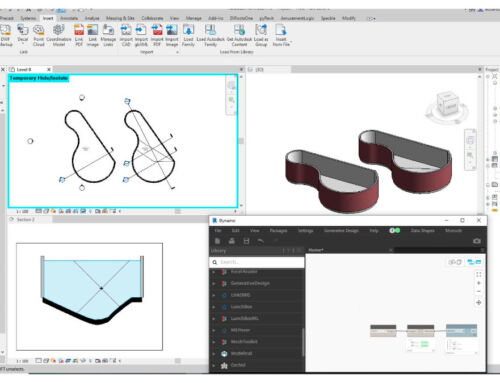In 2011, the same year that the Danish design and architecture studio Tredje Natur (literally “third nature”) was founded, a flash flood caused more than $1 billion worth of damage in Copenhagen in just two hours. The studio’s co-founder, Flemming Rafn, recently told Dezeen that “we just saw the need for trying to look at things differently”. That is precisely the intention of POP-UP, the project to which we dedicate this space, a way of looking at things differently, a design for a large flood water reservoir that is both a car park and a public green space. Or a car park that doubles as a public park and a storm tank for flood prevention. Or a public park that hides a car park and a spillway for flood water.

Indeed, as Tredje Natur explains, POP-UP “solves three challenges at once”:
-One: when it rains heavily, instead of flooding the streets and buildings, the rainwater is directed to the underground reservoir.
-Two: the car park structure, being floating, emerges above the street from the hollow of the storm tank and leaves space for the accumulation of water; however, it fulfils its function at all times and thus frees up valuable space in the urban environment for car parking for public squares, housing or any other use.
-Three: the upper part of the structure is intended for recreation and improvement of the quality of life of citizens, with a green area; it is accessed from the street in the absence of rain, or via a walkway when the parking structure is raised by floodwaters.
“Instead of constructing a rainwater reservoir that will be empty 99% of the time, a monofunctional parking facility —often too expensive to build underground where it does not occupy space—, and an active urban space,” Tredje Natur explains, ” we propose a single solution that can maximize the usage of m2, user value and minimize the overall construction and operating cost.”

Tredje Natur has developed POP-UP in collaboration with the engineering companies COWI and RAMBØLL, which have contributed structural models and financial calculations. Therefore, the operation of POP-UP relies on the assistance of ‘hydraulic/mechanical lifting and steering bearings‘ which serve to counteract the uneven weight distribution of the parked cars, so that the structure is raised or lowered safely and evenly with changes in the water level. Otherwise, the two lower levels of the car park are enclosed and always remain underground to ensure buoyancy and stability. The circular shape of the whole system lightens the structure, promotes buoyancy and protects the tank from the pressure of the water and the earth. Finally, when the system is able to channel it, the water is slowly returned to the sewage system and the car park returns to its resting position.
Sources: Tredje Natur, Dezeen. Images: Tredje Natur.






